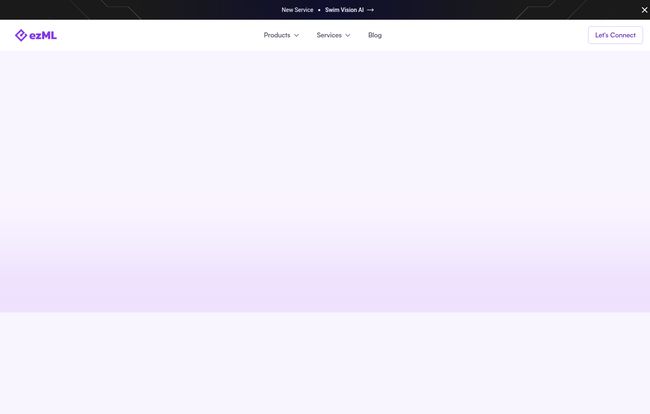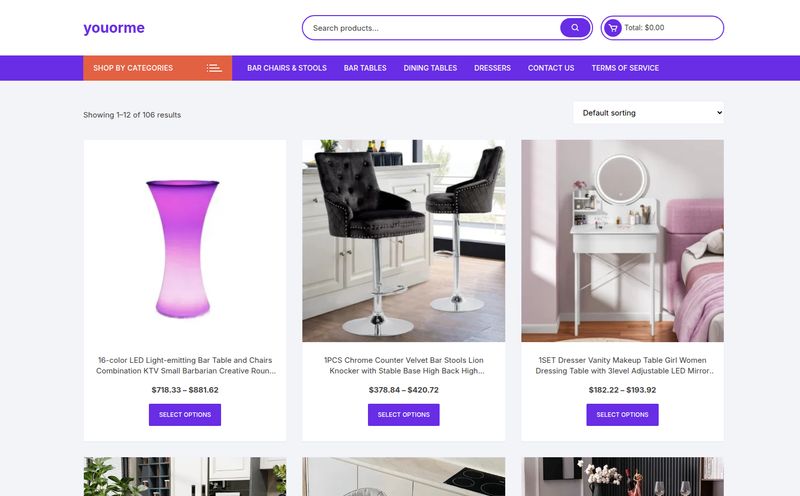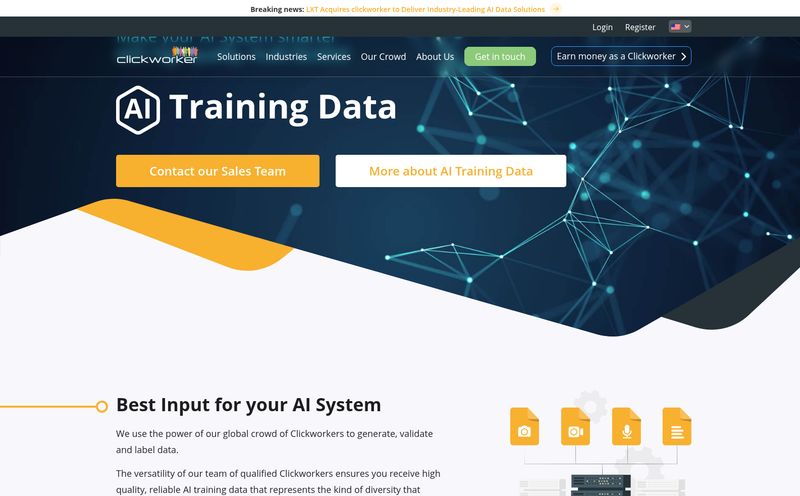If you've ever tried to bolt computer vision (CV) functionality onto an app, you know the pain. It’s a world of training data headaches, obscure Python libraries, server configurations that make you want to pull your hair out, and the constant fear that your AWS bill will suddenly resemble a phone number. For years, it’s been a high-barrier-to-entry club. You either had a dedicated ML team or a whole lot of patience.
So, when I stumbled upon a platform called ezML, my professional skepticism immediately kicked in. Their headline promise? To let you create custom CV functionality and integrate it into your app in... 30 seconds. Yeah, right. I've spent longer than that trying to center a div.
But my curiosity got the better of me. Could a tool really make computer vision this accessible? I decided to take a look under the hood. What I found was pretty interesting, and it might just change how you think about implementing CV.
So, What is ezML Anyway?
At its core, ezML is a cloud-based platform designed to take the grunt work out of computer vision. Think of it less like building an engine from raw metal and more like getting a high-performance crate engine delivered to your garage, ready to drop in. It provides a simple API that connects your application to a massive library of prebuilt CV models and functionalities.

Visit ezML
You’re not writing machine learning code. You’re not sourcing and labeling thousands of images for training data. Instead, you're using their 'pipe builder' to snap together pre-built layers—like image recognition, object detection, or facial analysis—to create the exact function you need. It’s a completely different workflow, one that prioritizes speed and simplicity over reinventing the wheel.
The Features That Actually Matter
A feature list is just a list until you understand what it means for your project. Let's break down what ezML brings to the table.
Prebuilt Model Pipelines and a Computer Vision API
This is the main event. Instead of starting from scratch, you get access to a whole library of functions. Need to identify products in a photo? There’s probably a pipeline for that. Want to analyze customer sentiment from facial expressions? They've likely got you covered. This is a massive time-saver. The API is the bridge that lets your app talk to these powerful models without needing to host them yourself. Simple, clean, and effective.
Zero-Shot Learning
Okay, this is where things get really cool for us tech nerds. Zero-shot learning is a type of model that can identify objects or concepts it wasn't explicitly trained on. It’s a huge step toward more flexible and intelligent AI. For you, the user, this means the platform is far more capable out of the box and can handle a wider variety of inputs without you needing to create a super-specific custom model for every little thing. It's a bit like magic, but it’s just very clever AI.
Rapid Inference and Scalable Deployments
"Rapid inference" is just a fancy way of saying it's fast. Your app sends an image, and it gets a result back quickly. This is critical for any user-facing feature. Behind the scenes, ezML handles the scaling. So, if your app suddenly goes viral and you jump from 100 users to 100,000, their system is built to handle the load without you needing to frantically provision new servers. That’s peace of mind you can't put a price on.
My Experience: The Good and The Not-So-Good
No tool is perfect, right? Every platform has its strengths and its... quirks. Here’s my breakdown of where ezML shines and where you might hit a snag.
The Wins I Noticed Right Away
The biggest pro is the sheer speed of integration. That 30-second claim might be a bit of marketing flair, but it's not far from the truth for a basic implementation. For developers or startups wanting to prototype a new feature, this is incredible. You can validate an idea in an afternoon instead of a quarter.
The fact that you need zero machine learning code or training data is the other huge win. This opens up computer vision to a whole new class of creators: front-end devs, mobile developers, and product managers who can now build things that were previously out of reach. It truly democratizes the technology.
And I have to mention the cost-efficiency. They mention things like auto-shutdown and cold-start optimization. This means you’re not paying for idle servers. For any small business or indie hacker, managing cloud spend is a constant source of anxiety, and this kind of smart resource management is a godsend.
Some Potential Caveats
Of course, there are trade-offs. The reliance on prebuilt models means if you have a very niche or highly specific need, you might not find a perfect fit out of the box. They do mention that you can make custom layer requests, which is a good escape hatch, but it's an extra step and probably not as instant as using their standard library.
This approach can also feel a bit less flexible if you're an experienced ML engineer who loves to tinker with model architectures. This platform is more for people who want the result, not the process. Also, and this is a minor pet peeve of mine, you do have to log in to access the platform. I always prefer to be able to browse the goods before handing over my email.
The Big Question: What About the Pricing?
This is the part of the review where I’d normally break down the pricing tiers. But here's the thing—I couldn't find them. I clicked on what I assumed was their pricing page, and I was greeted by a classic '404 Page Not Found' error. Whoops.
Now, this could mean a few things. They might be in the middle of updating their website. They might be operating on a 'contact us for a quote' basis, which is common for B2B SaaS platforms. Or perhaps they are still in a beta phase where pricing isn't finalized. Without official info, I can't give you a number. My advice? If you're interested, use their 'Let's Connect' button and just ask. It's better to get the real story straight from the source.
Who is ezML Really For?
After playing around with the concept and looking at its features, a clear picture emerges of the ideal ezML user.
- Startups and SMBs: Teams that need to move fast and add powerful features without hiring a dedicated AI/ML department.
- Indie Developers & Hackers: Solo creators who want to build cool projects with advanced tech on a budget.
- Prototyping Teams: Larger companies that want to quickly build and test a proof-of-concept before committing massive resources.
Who is it not for? Probably academic research groups or R&D departments at tech giants that are building novel, cutting-edge model architectures from the ground up. They need the granular control that ezML abstracts away. ezML is a tool for builders, not necessarily for deep researchers.
Frequently Asked Questions
What exactly is ezML?
ezML is a cloud-based platform that makes it super easy to add computer vision features (like image recognition and object detection) to your applications using a simple API, without needing any machine learning expertise.
Do I need to be a machine learning expert to use ezML?
Absolutely not. That's its main selling point. The platform is designed for developers and creators who want to use computer vision without getting into the weeds of ML code, data training, or server management.
Is ezML built to handle a lot of users?
Yes. The platform is designed for scalable deployments, meaning it can handle traffic spikes and growth as your app becomes more popular without you needing to manage the underlying infrastructure.
How much does ezML cost?
As of this writing, public pricing information isn't available on their website. It's best to contact their team directly through their site to get the most accurate and up-to-date details on their pricing model.
What kinds of computer vision tasks can I perform with ezML?
ezML offers a library of prebuilt functionalities for common CV tasks like image recognition, object detection, facial analysis, and more. You can chain these functionalities together to create custom pipelines for your specific needs.
Is ezML a good alternative to building my own CV models?
It depends. If your goal is to quickly and cost-effectively integrate standard computer vision features into an application, then yes, it's an excellent alternative. If your project requires a completely novel, highly specialized model architecture for research purposes, you might still need to build your own.
Final Thoughts on ezML
Look, the world of SaaS tools is crowded. Every day there's a new platform promising to be the next big thing. But ezML feels different. It's not just another tool; it's a door-opener. It takes a powerful, complex, and frankly, intimidating field like computer vision and makes it approachable.
While it may not be the perfect solution for every single use case on the planet, it’s a massive step forward for the vast majority of developers and businesses who just want to build cool, smart stuff without getting an honorary Ph.D. in artificial intelligence first. It’s a tool that respects your time and your budget, and in this industry, that's a rare and beautiful thing.
Is it truly the end of complicated CV setups? For many, I genuinely think it could be.



